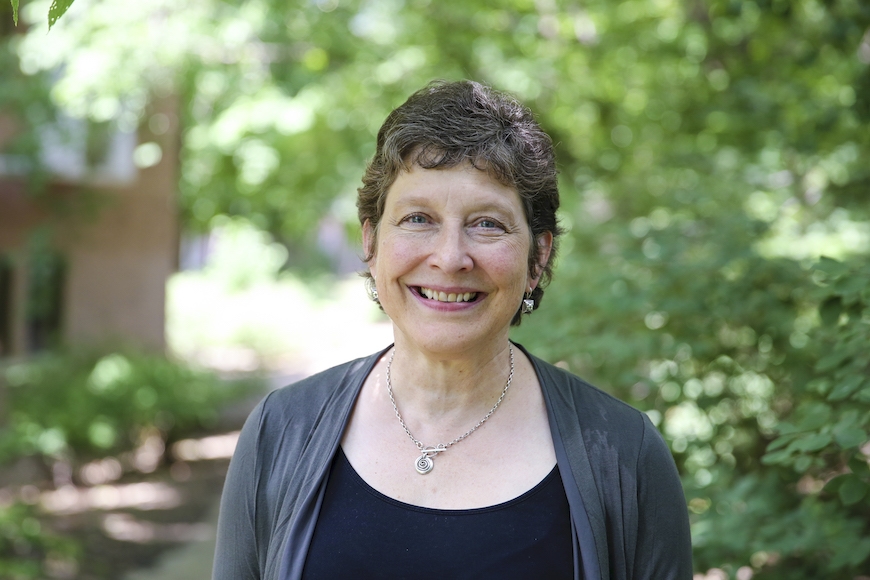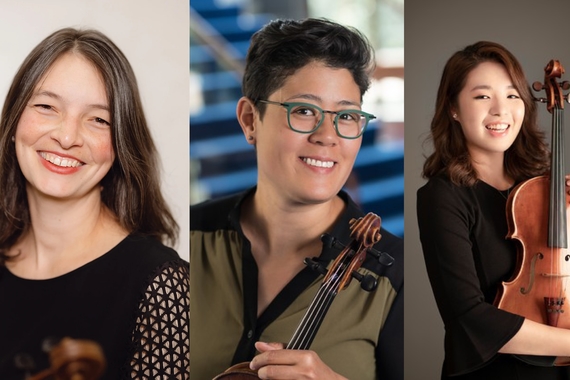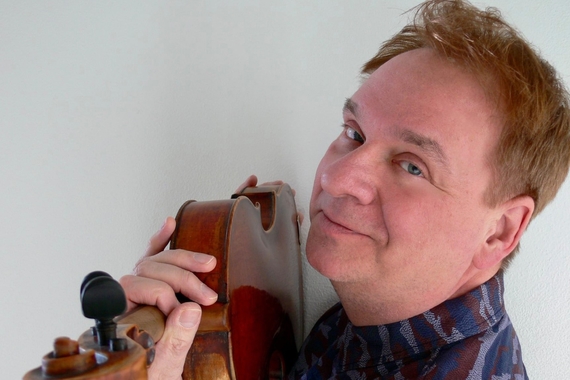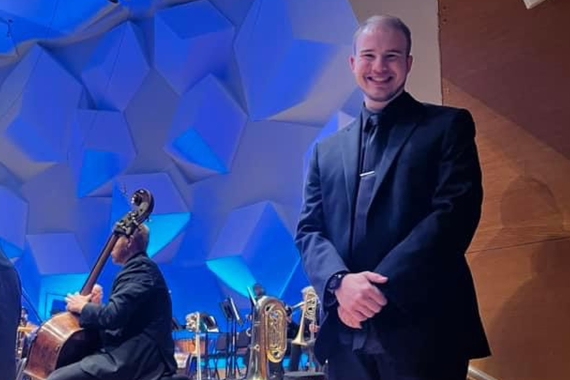Q&A with Kathy Saltzman Romey on bringing Paulus' To Be Certain of the Dawn home to the Twin Cities
On Saturday, November 9th the University Choirs will perform alumnus Stephen Paulus’s Holocaust Memorial Oratorio To Be Certain of the Dawn at 7:30 pm in Ted Mann Concert Hall. The work was commissioned in 2000 by the Basilica of Saint Mary of Minneapolis as a gift to the Twin Cities Jewish community. Professor Kathy Saltzman Romey has been working together with librettist Michael Dennis Browne and former rector of the Basilica, Father Michael O’Connell, to prepare the University Choirs and University Symphony Orchestra for the performance.
Professor Romey shares why she decided to bring the oratorio to the University of Minnesota, her thoughts on its relevance, and the role the work plays at this time in history.
Can you tell us more about why this piece was considered a gift?
Father Michael O’Connell did not initially know what this gift would be. It was the turn of the century and he wanted to do something significant to mark the millenium and acknowledge the role the Christian Church played in 2000 years of antisemitism and the Holocaust. He thought about many possibilities and ultimately settled on a work of art—a musical commission which could be performed again and again, to serve as a constant reminder of the past and build community and understanding between contemporary people each time it would be presented. To Be Certain of the Dawn was premiered at the Basilica of St. Mary in November 2005, a year which marked the sixtieth anniversary of the liberation of the death camps and the fortieth anniversary of the Vatican document Nostra Aetate (In Our Time), which positively contributed to the renewal of dialogue between Jews and Christians.
The work is divided into three sections. In Part 1 (Renewal), Michael Dennis Browne’s texts examine “Christian grief, and their failure to support Jews in the terrible ordeal of the Shoah”. In humanistic terms, this part of the work is about the role any of us play when we are witness to an injustice. Are we active or passive? Do we speak out or are we silent? What would we as individuals do in the face of discrimination and human suffering?
What connections does the piece have locally?
While this piece has been performed throughout the United States and in Europe, it is a work that very much belongs to this community. I felt it was important to bring it back to the Twin Cities, and to finally perform it here at the University of Minnesota, the home of its two creators.
Composer Stephen Paulus received his Ph.D in Composition from the School of Music in 1978. Librettist Michael Dennis Browne is Professor Emeritus of the University English Department. I conduct the choirs here and also serve as artistic director of the Minnesota Chorale, which participated in the second performance of the oratorio and in the subsequent recording of the work. Robert Fisch, Professor Emertius of Pediatrics at the University, is one of the Holocaust survivors who is quoted in the third part of the work.
The oratorio is also indicative of the long and close friendships between Temple Israel and the Basilica of St. Mary in Minneapolis. The work opens and closes with the call of the shofar — a ram’s horn trumpet used in Jewish religious ceremonies, and the chanting of a prayer by Barry Abelson, who serves as cantor at Temple Israel. Cantor Abelson was a soloist in the 2005 premiere and was again featured in the second performance and recording of the oratorio in 2007 with the Minnesota Orchestra.
How is the timing of the performance significant?
November 9th will be the 81st anniversary of Kristallnacht, “the Night of Broken Glass” when the Nazis vandalized and destroyed Jewish synagogues, homes, and businesses. 2019 is also the fifth anniversary of Stephen Paulus’s passing, and the 14th anniversary of the work’s premiere. This felt like the right time for me to mount the oratorio with our students.
We have often performed the beautiful Hymn to the Eternal Flame with our choirs at the University of Minnesota. This hymn comes from To Be Certain of the Dawn and is sung multiple times throughout the oratorio. The original text derives from a solitary tombstone in a Jewish synagogue, which survived the devastation of Kristallnacht. The words on the tombstone, written in Hebrew and German, were: You should love your neighbor as yourself. Stephen Paulus saw a photo of this tombstone and was so moved by it, that he incorporated the text into a hymn, which is heard in Hebrew, German, and English at various points in the oratorio. Michael Dennis Browne then took the hymn melody and added his own text for Hymn to the Eternal Flame: Every face is in you, Every voice, Every sorrow in you, Every pity, Every love, Every memory woven into fire.
As a conductor, what do you find most interesting about To Be Certain of the Dawn?
What’s really wonderful about this piece is the role that children play within the oratorio. Michael O’Connell wanted the piece to look backward and forward in time through the lens of children. So, a children’s chorus sings four blessings throughout the work, each of which begins in Hebrew and then continues in English. Michael Dennis Browne refers to the faces of the children as “the sun, moon and stars of the work”.
In Part 2 of the oratorio (Remembrance), the soloists dramatize stories of Jewish children portrayed in projected photographs from the period. These photos are black and white images of Jewish children in Eastern Europe from the years 1935-1938 assembled by Roman Vishniac in his collection Children of a Vanished World. Michael Dennis Browne created stories around four of these images, which Stephen Paulus then set as solo arias.
The images capture a moment in time, and the arias that accompany them, share a narrative depicting dual-levels of meaning. One level is that of the children and their perspective of innocence and wonder in viewing the world around them. A second level is that of a world of war, discrimination, and genocide which surrounded children of the period. Part 3 (Visions) envisions a world of hope and solidarity and also incorporates memories of Holocaust survivors from the Twin Cities community.
Can you share an example?
The first solo aria depicts a story based on an image of two little girls. They are out taking a walk, holding hands. They are innocently aware that someone is observing them through a camera, perhaps taking a photo of them. The aria describes them looking at and playing to the camera in front of them. On a deeper level however, we know that Jews were under constant surveillance by the Nazis. The chorus stands up in the middle of the aria and sings two lines from the Nuremberg laws: Jews cannot be citizens, Jews cannot meet in public places. These were laws that institutionalized antisemitism and racist practices in Nazi Germany. The laws are pronounced quickly and succinctly after which the choir sits back down, and the soloists resume their story of the two little girls – ”Hands are for holding onto, for filling up, and never for hurting us, hands are for giving us things. What do you think of our shoes??”
For you personally — what is this piece about?
For me, this work is a journey similar to that of a Bach cantata or passion. We journey from darkness into light, witnessing the personal and collective experiences of those who lived and those who died. Throughout the oratorio, there is a common message in the beautiful hymn of Stephen Paulus – V’a havta le reacha kamocha meaning “you should love your neighbor as yourself”.
As we look forward in time, those that can envision a new reality are the children. If they know and truly understand what happened in the past, they can serve as advocates for peace and global understanding in the years to come. And that was the ultimate goal of Michael O’Connell, who, in the words of Stephen Paulus, “decided that an oratorio would be a powerful vehicle for communicating to individuals and communities that children are key to the prevention of genocide, both today and in the future.”
To Be Certain of the Dawn
Saturday, November 9 at 7:30 pm | Ted Mann Concert Hall
Written by Stephen Paulus in collaboration with librettist Michael Dennis Browne
Featuring: University Singers; Chamber Singers; Women’s and Men’s Choruses; University Symphony Orchestra; Cantor Barry Abelson, Temple Israel; Project Opera, Singers from Ragazzi and Giovani Ensembles. Kathy Saltzman Romey and Matthew Mehaffey, conductors.
Tickets at z.umn.edu/certaindawn or call 612-624-2345.
Tickets: $15 Advance Adult
$20 Week Adult
$15 UMN Faculty/Staff
$5 children 12 & under | UMN students
General admission



